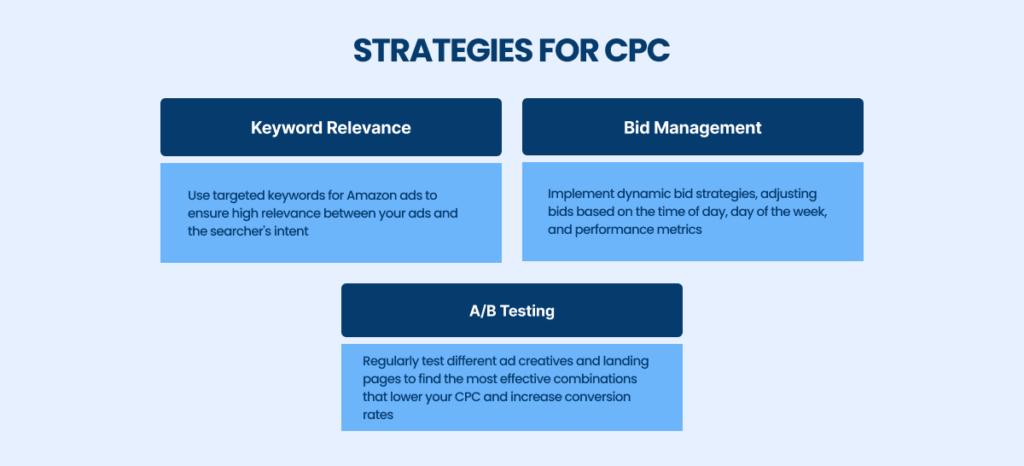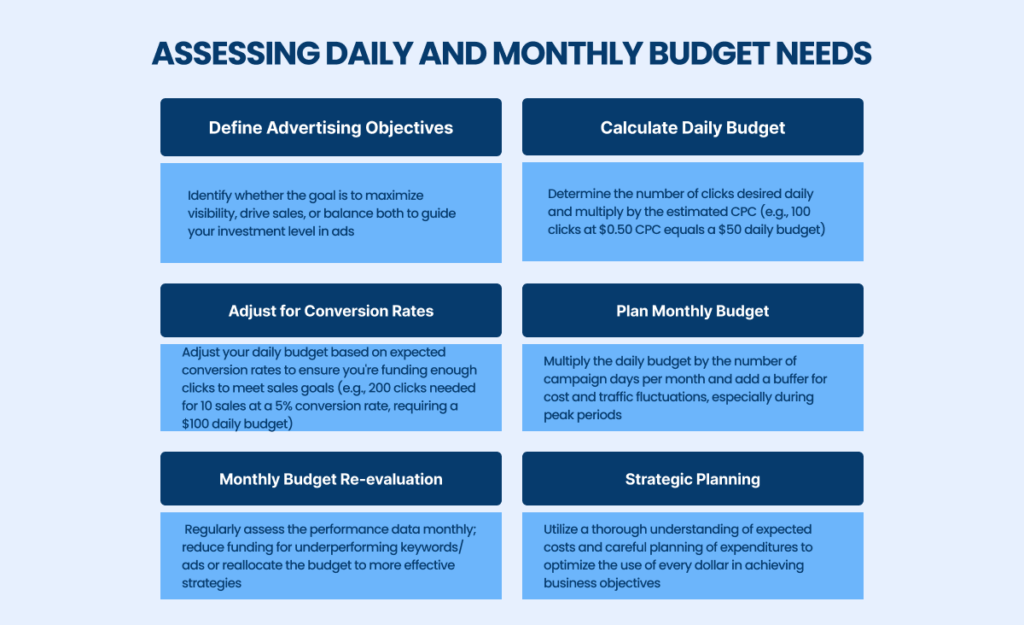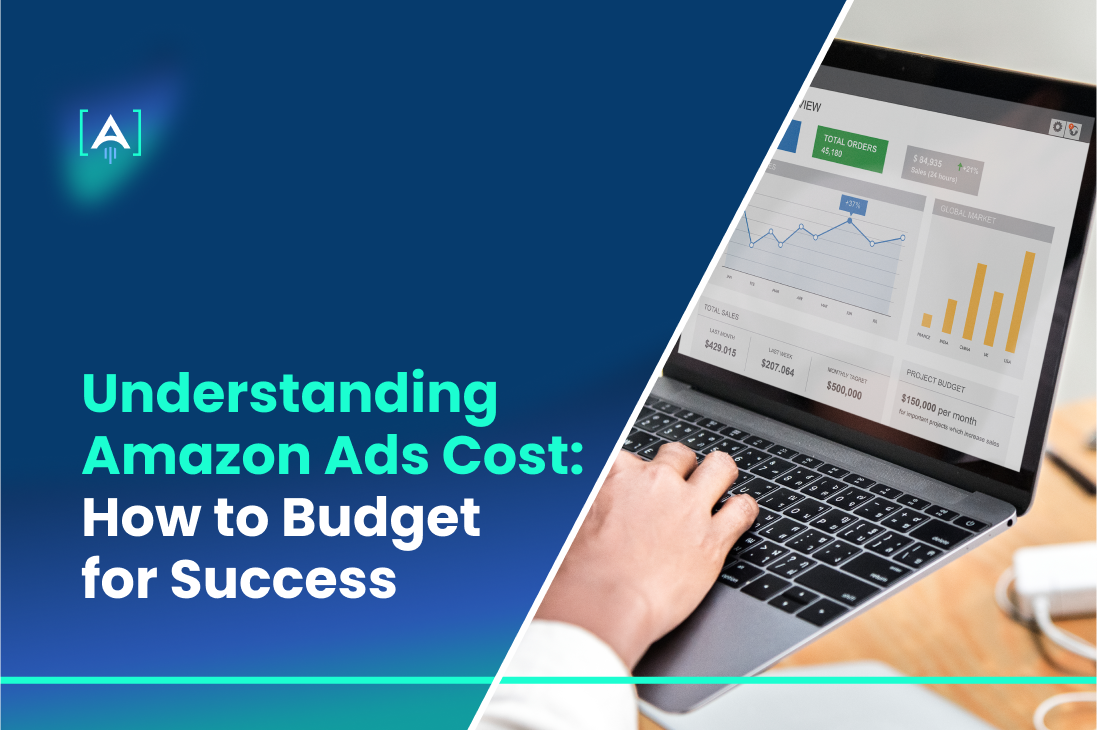Effectively managing your Amazon Ads budget is essential for maximizing your return on investment (ROI).
By understanding the various cost factors and implementing sound budgeting strategies, you can optimize your campaigns and achieve your desired business goals.
Jeff Bezos, the founder of Amazon, often discusses broader business strategies. His advice on budgeting is to think long-term and reinvest in areas that ensure scalable success.
For Amazon Ads, this could translate into continuously optimizing and reinvesting ad spend based on performance data to maximize ROI. The latter enables advertisers to allocate budgets more effectively and optimize campaigns for higher returns.

Statista notes that Amazon’s annual advertising costs were 20.6 billion U.S. dollars in 2023.
Accordingly, to truly understand Amazon Ads’ cost and effectively budget for success, an experienced Amazon Ads Agency can provide specialized insights and strategies to optimize your ad spend.
This guide will explore the key components of Amazon Ads costs, provide insights into budgeting practices, and offer actionable tips to help you allocate your resources efficiently.
The Basics of Amazon Ads Cost
If you already know how to create Amazon ads, it is time to move forward. Understanding the intricacies of Amazon ad costs is crucial for anyone leveraging Amazon’s vast advertising marketplace.
From 2004 to 2023, Amazon’s net revenue from e-commerce and service sales increased tremendously. In the last reported year, the multinational e-commerce company’s net revenue was almost 576 billion U.S. dollars, up from 514 billion U.S. dollars in 2022.
Source: Annual advertising costs of Amazon from 2014 to 2023, Statista
The costs associated with Amazon advertising can vary widely depending on several factors, including the competition in your product category, the relevance of your ads, and how well they convert.
Understanding Cost Structures
Amazon offers various advertising cost structures catering to sellers’ goals and strategies.

Each model has its nuances and applications, so it’s important to understand which best suits your specific objectives in Amazon marketing.
Cost-Per-Click (CPC)
Cost-per-click, or CPC, is the most common pricing model for Amazon ads, particularly for Sponsored Products ads and Sponsored Brands.
In this model, you pay only when a shopper clicks on your ad. The CPC model allows you to set a maximum bid – the highest amount you will pay for a click on your ad. Amazon then uses an auction-based system to determine whose ads are shown based on the bids and the relevance of the ads to the user’s search query.
Benefits of CPC:
- Control Over Costs: You can set daily budgets and adjust bids based on the ads’ performance, helping to control the overall cost of Amazon ads.
- Flexibility: CPC allows users to test different keywords and advertising campaigns without incurring costs unless there is direct engagement (clicks) with the ads.
- Optimization Opportunities: You can continuously optimize your bids based on the performance data to maximize ROI, focusing on keywords that bring the best results.
Strategies for CPC

Cost Models: CPM and CPA
Cost-Per-Mille (CPM): Cost-Per-Mille, or cost per thousand impressions, is a model primarily used for Sponsored Display Ads and Amazon DSP ads (Demand Side Platform). This model charges based on the number of impressions (views) your ad receives, not clicks.
CPM is ideal for building brand awareness and visibility as it ensures that many people will see your ads, regardless of whether they click on them.
Benefits of CPM:
- Visibility: Great for increasing brand awareness among a broad audience.
- Predictable Costs: It is easier to predict costs as they are based on impressions rather than variable clicks.
Strategies for CPM

Cost-Per-Acquisition (CPA): Cost-per-acquisition is a performance-based advertising cost model used less frequently on Amazon but is applicable in certain promotional or lead generation contexts. Under CPA, you pay when an ad leads directly to a sale or a predefined action, such as signing up for a newsletter. This model is highly contingent on tracking and attributing conversions accurately.
Benefits of CPA:
- High ROI Potential: A well-targeted and managed campaign can yield a higher return on investment since you pay only for results.
- Lower Risk: You incur costs only when the desired outcome is achieved, reducing the risk of wasted ad spend.
Strategies for CPA:
- Conversion Optimization: Focus intensely on optimizing the conversion pathway, from ad click to purchase or action completion.
- Highly Targeted Campaigns: Develop campaigns that are highly targeted towards users late in the buying cycle to increase the likelihood of conversion.
By choosing the right cost model and applying specific strategic tactics, advertisers can effectively manage their Amazon advertising cost, ensuring that their campaigns fit their budget and achieve their desired marketing objectives.
Whether aiming for broad brand visibility or specific performance outcomes, understanding these cost structures is fundamental to successfully navigating Amazon’s complex advertising landscape.
Setting Up Your Amazon Ads Budget
Effective Amazon ads management and budgeting are pivotal for success in Amazon advertising. It involves a detailed understanding of how to set up an appropriate budget that maximizes return on investment while minimizing unnecessary spending.
Estimating Initial Costs
Understanding the initial costs of Amazon ads begins with calculating the expected Cost-Per-Click (CPC). This calculation is vital as it helps you grasp how much you’ll likely spend each time a potential customer clicks on one of your ads.
The CPC can vary significantly depending on several factors, including the competitiveness of the keywords, the type of product you’re advertising, and the overall demand within your market segment.
To calculate the expected CPC, start by researching the average CPC for your product category on Amazon. This information can be gleaned from Amazon’s advertising console or through third-party tools that provide insights into Amazon advertisers’ spending patterns. Analyze historical data of similar campaigns or consult with industry benchmarks to get a baseline idea.
Once you have an average CPC, you can apply it to various scenarios based on your advertising strategy to forecast your spending.
For example, suppose you plan to run Amazon Sponsored Ads or Sponsored Product Ads. In that case, you’ll typically face a higher CPC due to the direct conversion potential of these ad types.
How to Calculate Expected CPC
The expected CPC can be calculated by analyzing past campaigns or using predictive analytics tools offered by Amazon or third-party providers.
Consider the average CPC in your product category, adjust for the seasonality and current market trends, and refine your estimate based on the specificity and competition for your chosen keywords. This refined estimate will better reflect what you can expect to pay per click, which is crucial for managing your Amazon advertising cost-effectively.
Assessing Daily and Monthly Budget Needs
Once you understand your expected CPC, the next step is assessing your daily and monthly budget needs.

Strategies for Cost-Effective Amazon Advertising
To thrive in Amazon’s competitive marketplace, it’s crucial to develop cost-effective strategies for driving traffic and increasing sales.
Optimizing ad spend and utilizing techniques such as A/B testing can help advertisers maximize their advertising budget while minimizing costs.
Optimizing Ad Spend
Optimizing your ad spend on Amazon involves strategic planning and continuous monitoring to ensure that every dollar spent contributes positively to your overall return on investment (ROI).
The goal is to achieve the best possible outcomes while keeping Amazon’s advertising costs as low as possible.
Importance of A/B Testing in Budgeting
A/B testing plays a critical role in budgeting for Amazon ads by allowing advertisers to compare different ad elements directly against each other to determine which ones perform best. This empirical testing approach helps make informed decisions about where to allocate the budget most effectively.
- Test Ad Elements: Variations can include images, headlines, product descriptions, or calls to action. By running these variations simultaneously, you can statistically determine which elements resonate best with your target audience.
- Budget Allocation: Use the insights from A/B testing to reallocate your budget more effectively. Invest more in the ad variations that yield higher returns and cut spending on those not performing well.
- Refine Targeting Strategies: A/B testing can also help refine your targeting strategies. Testing different audience segments and adapting the targeting based on performance data can lead to more precise ad targeting, thus reducing costs and improving the impact of your ads.
- Optimization Over Time: Regular A/B testing should be an integral part of your strategy to optimize Amazon display ads and Amazon video ads continually. This will ensure that your campaigns remain fresh and relevant, adapting to changing consumer preferences and market dynamics.
By employing these strategies, advertisers can enhance the effectiveness of their Amazon advertising campaigns while managing costs efficiently.
Optimizing CPC and leveraging A/B testing are foundational techniques that help refine advertising efforts and ensure that the budget is spent on ads that truly contribute to business goals.
Partner with [A] Growth Agency for Your Amazon Ads Cost Budgeting
Remember, every click, every ad, and every dollar counts toward reaching your audience and converting their interest into tangible sales. Now is the time to take control of your Amazon advertising strategy, optimize your spending, and turn your advertising investments into profitable returns.
[A] Growth Agency will change the game by refining your approach to Amazon Ads cost. We specialize in turning entrepreneurial dreams into reality with effective, tailored growth strategies. Moreover, expertise extends to harnessing cutting-edge analytics and market insights, ensuring that every campaign meets and exceeds your performance expectations.
Let us help you navigate the complexities of Amazon advertising.

